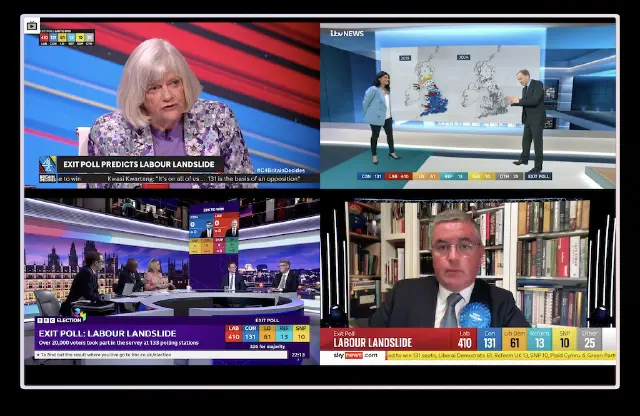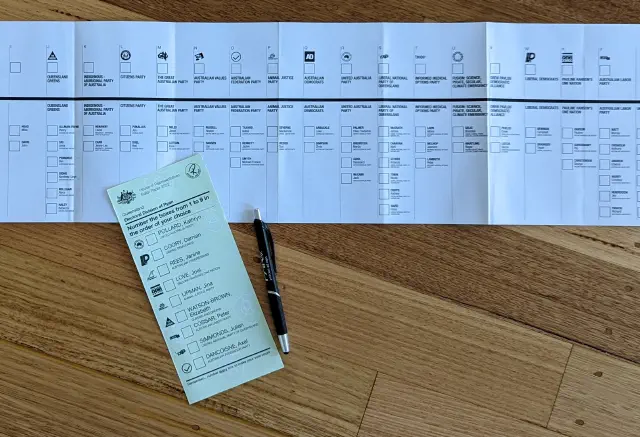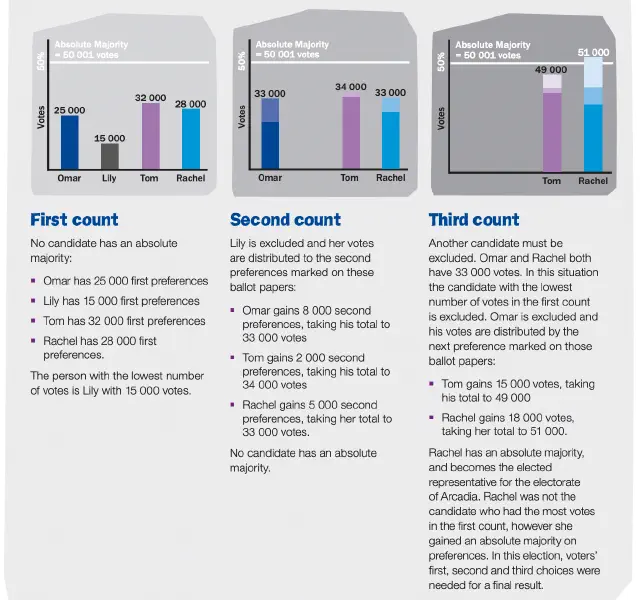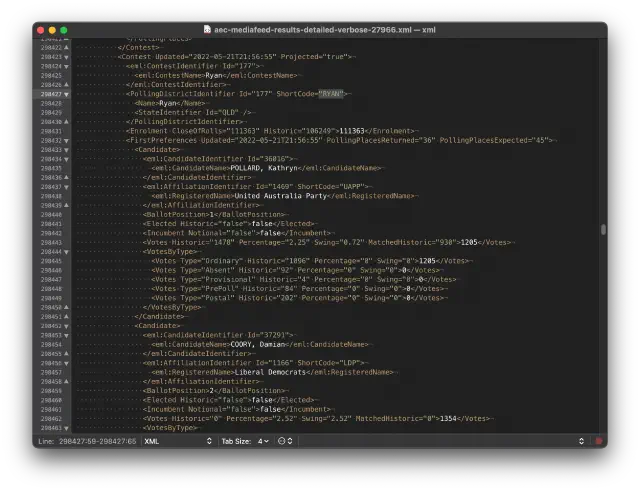Voting and elections in the UK vs Australia

David Dimbleby, who used to present the Election Night on the BBC, hates the exit poll. “It’s the worst invention ever brought in – it’s like a thriller and you’re given the answer before we’ve even started on page one.”
At 10pm, every television company uses the same exit poll, which is depressingly accurate, and takes all the fun out of staying up all night to watch the results. The exit poll got things relatively right this time - predicting Labour 410, Conservatives 131, LibDem 61, Reform 13, and SNP 10. The final results are expected to be Labour 412, Conservative 121, LibDem 72, Reform 5, and SNP 10. The exit poll was a little wrong for the Reform party, but otherwise about right.
A quirk of the system means that the Lib Dems got 3.5mn votes and got 61 seats, while Reform got 4.1mn votes and got only 5. That’s because the first-past-the-post electoral system in the UK elects a candidate who has received the most number of votes in a specific area.
Overall turnout was just 59.8%. That’s the second lowest turnout since 1918.
Australia by comparison
In the last equivalent of the General Election, the 2022 federal election, turnout was 89.8%. It’s mandatory to vote in Australia (though as you can see, that doesn’t still result in 100%). If you don’t vote, you’re fined - though, not by much. The fine is $20, though if you don’t pay that though, the rules suggest you can expect a criminal conviction, a period in jail, or a community-service order.
Voting is always done on a Saturday, 8am-6pm local time.

Australia has preferential voting, which - for the equivalent of the General Election - is quite simple. On your ballot paper, you give each candidate a preference (1 for your first choice, 2 for your second, and so on). There’s mine, above (let’s not get into the madness of the white paper, the Senate). Then, the winner is the one who gets more than 50% of the votes.

So, if there are 100,000 votes, that means a few counts, to knock out the candidates who get the lowest amount of votes, and use their second preferential votes to the other candidates.
This means most parties give out “how to vote” papers - which presumably gives them the best chance of getting in.
Election night, the Australian way
All the above means that an “exit poll” is quite difficult to do in Australia; so we don’t have the 10pm “spoiler” at the beginning of election night. There are some opinion polls, of course, but they don’t always tell you the whole story. So, the election night coverage for 2022 - here it is, if you want to watch - does not start with an exit poll at all.
Further, unlike the UK, results are given as they are counted - every 90 seconds, electronically. Here’s a little bit of what it looks like for my voting area (an “electorate” in Australian English, a “constituency” in British English).

So, in this chunk of XML, you can hopefully see that we’re looking at the votes in Ryan. Votes are counted at polling places themselves (have you seen how big Australia is?!), and at the time I took this snapshot, at 9.56pm, 36 polling places had counted and returned their votes out of 45.
Kathryn Pollard was randomly chosen as #1 in the ballot paper this time round, and you can see she currently has 1,205 votes. See the “MatchedHistoric” number of 930? That’s how many votes that this party had last election for the polling places that have returned votes this time round. So, as you can see, she is doing better this time than last. Different polling places cover different parts of the electorate who may all vote differently.
As the votes come in, then, different networks have different algorithms to work out whether they can project a winner in each electorate, based on the swings and the total amount of votes carried.
All of this means that the election coverage night (6pm to just after midnight) is surprisingly exciting, as numbers come in every 90 seconds, and a lot of projections take place throughout the evening. By 3h51m into the coverage, the ABC is able to project that Labor would “at least be able to form a minority government”,
How would preferential voting work in the UK?
There’s a lot of talk about proportional representation - “a party that received one-third of the vote could expect one-third of the seats in parliament.”
But, preferential voting seems to be a little better. It’s similar to the Single Transferable Vote, except every area just gets one MP.
So, if you have a look at South West Norfolk, the Labour winner, Terry Jermy, won with 26.4% of the vote. Liz Truss was second, with 25.1% of the vote. Reform were third, with 22.3%, there was an independent at four, the Lib Dems were fifth with 5.9% of the vote, and the Greens were sixth with 4.1%.
If all Reform voters gave the Conservatives their second preference, that gives them 47%. Still not enough to win. If the Greens went to LibDem, who in turn all went to Labour, that only gives Labour 36%. Still not enough to win, either. So it all hangs on the independent candidate, James Bagge. Now, he was an ex-Conservative, it turns out; and by standing has (under a first-past-the-post model) essentially meant that the Conservatives have lost that seat. But with a preferential vote, you can probably assume that the majority of his voters would have gone for either Reform or the Conservatives in second place - and, therefore, Truss would still have won. Not ideal from my point of view; but probably representing that constituency’s views rather more closely than the Labour candidate.
Clacton is a bit easier: with Farage winning 46.2% of the votes in any case. After some guessing of how the preferential votes would work there, Conservatives would end with 27.9%, and Labour at 16.2% - so the Labour candidate would be knocked out, and their preferential votes be split between the Conservatives and Reform. Likely that Farage wins the seat, but possible that the Conservatives would retain it.
Now, what would be fun is to chuck all 650 seats into a preferential voting simulator, and see what would happen. But I can’t do that because, first, people would vote differently; and second, parties would campaign differently. Plus, even if I wanted to work this out from a blunt way of “all Reform voters would give Conservatives their 2nd choice”, I can’t do that, because the UK doesn’t actually have their electoral results available yet in a free form. If they can learn anything from the Australian elections, it’s the openness of the data.
To me, though, preferential voting seems to make the most sense for a country like the UK. I hope they consider it.